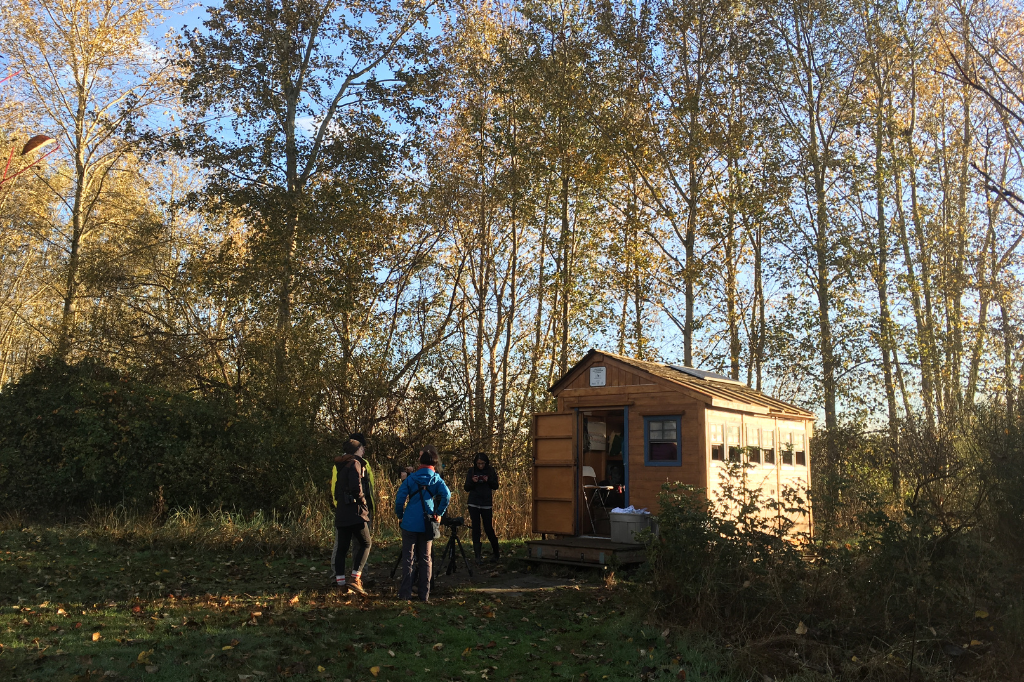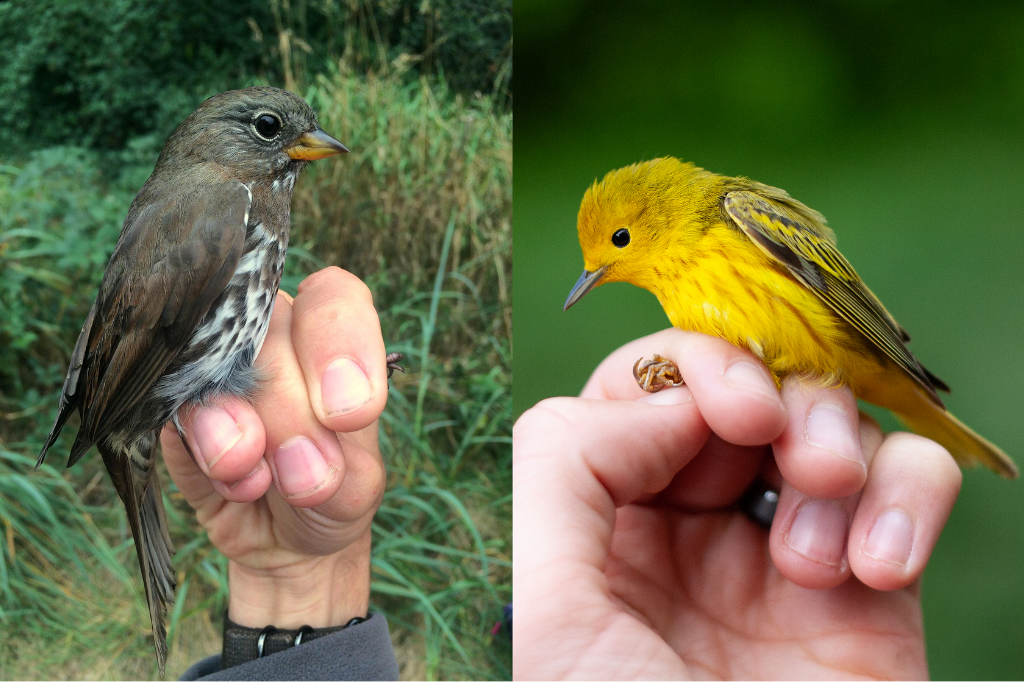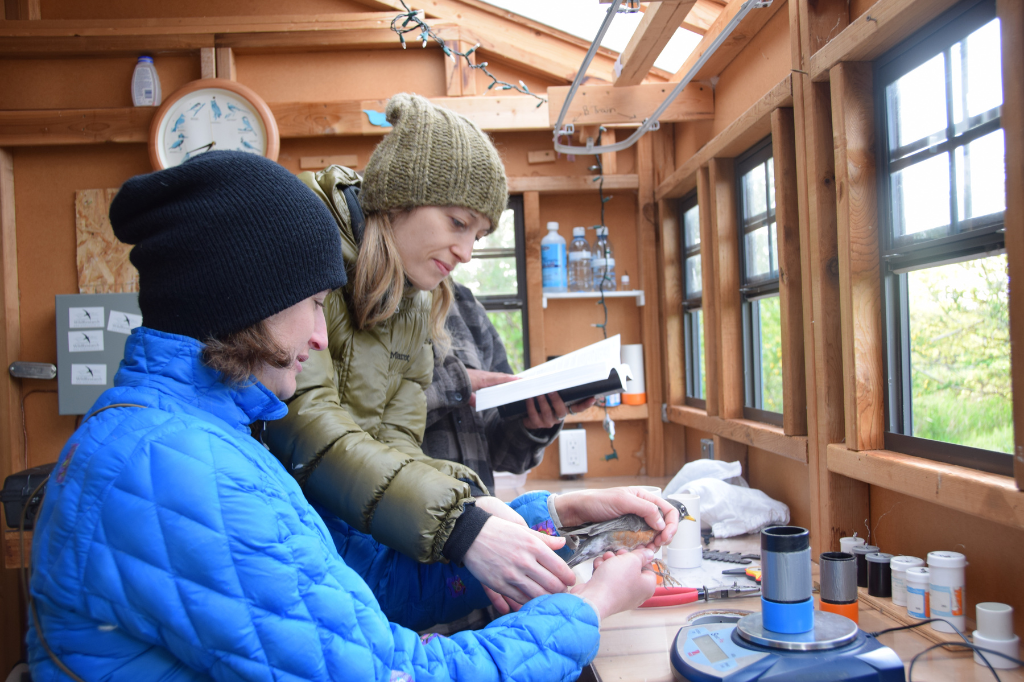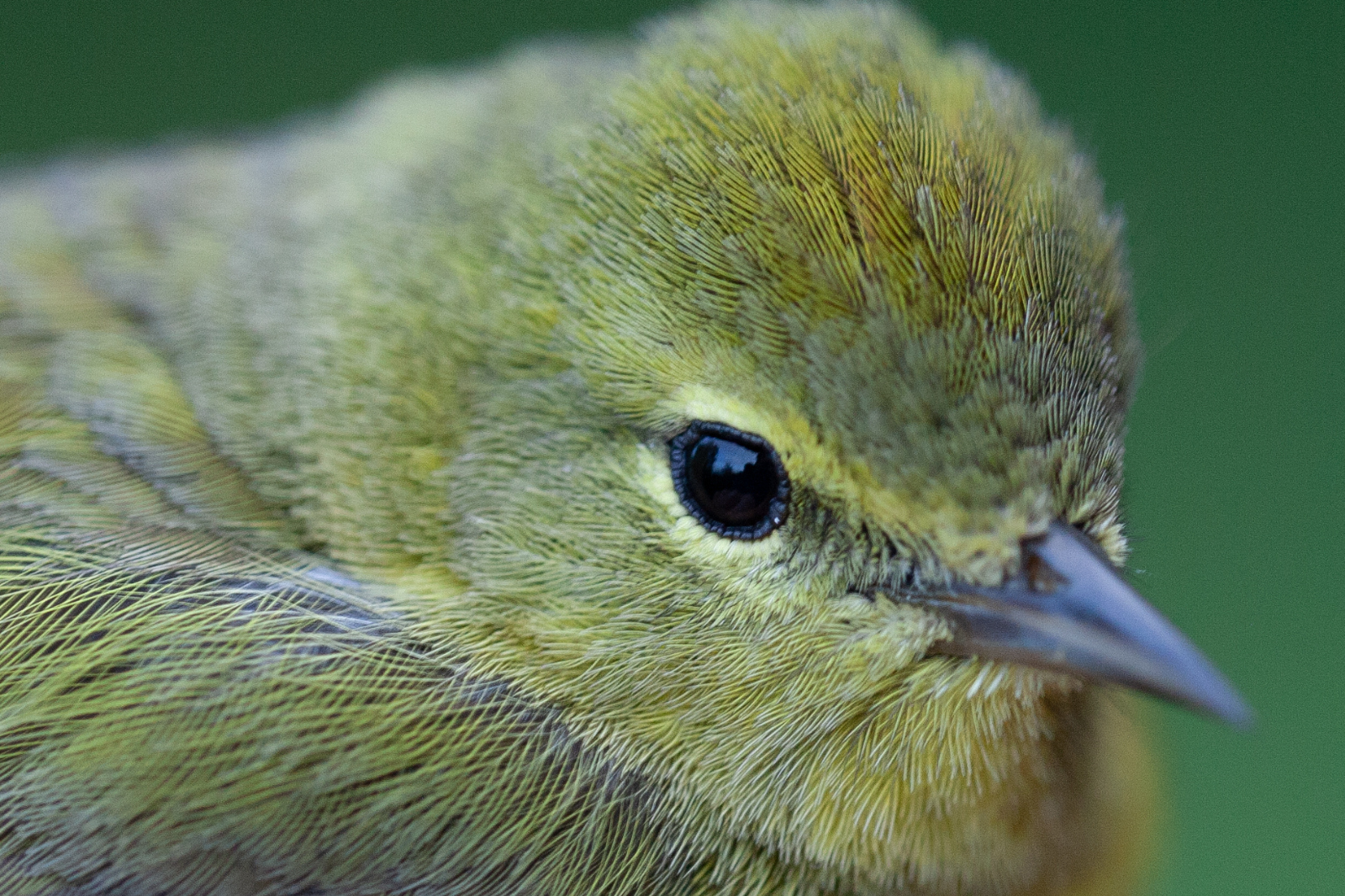By Kiirsti Owen, Andrew Huang, and Devin R. de Zwaan
Linked paper: Mass gain and stopover dynamics among migrating songbirds are linked to seasonal, environmental, and life-history effects, by D.R. de Zwaan, A. Huang, Q. McCallum, K. Owen, M. Lamont, & W. Easton. Ornithology.
Anyone who has stopped to fuel up their car has thought to themselves, How much fuel should I put in my car? The answer depends on many factors: the price of fuel, the distribution of refueling stations across the landscape, how much fuel remains, and how much further until the final destination is reached. Globally, many songbirds undertake incredible migratory journeys from their breeding grounds to their wintering grounds and vice versa, a particularly amazing feat considering their small body size. These birds likewise need to refuel at stopover sites along their migration routes and are constrained by many of the same considerations we make when refueling our cars. In this case, the price of fuel would be the energetic cost of capturing prey under current environmental conditions, and remaining fuel would be body condition upon arrival at a stopover site. Which factors influence differences in refueling rates among individuals and species is a complex question that researchers are still trying to untangle.
Stopover habitats are a critical component of migration and the annual cycle. Conditions that affect refueling rates during stopovers result in downstream effects on reproduction and survival. Refueling along the migration route represents a trade-off between maximizing fat deposition (fuel) to continue migration and minimizing time spent at stopover sites. For many birds, arriving early at the breeding site carries a competitive advantage, and therefore the ability for birds to quickly refuel and continue their migration—a greater refueling rate—may signal a high-quality stopover habitat.

Bird observatories are strategically placed in key stopover locations to monitor migratory bird populations. The Iona Island Bird Observatory (IIBO) in the southwest corner of British Columbia, Canada, is one such migration monitoring station, located within the globally significant Pacific Flyway (Photo 1, above). In a recent study published in Ornithology, we used data collected at IIBO to investigate how migratory songbirds use Iona Island during migration and what factors influence differences in refueling rates among species. The dataset, spanning 2010 to 2019, was largely collected by volunteers of the non-profit organization, WildResearch, which runs a spring and fall monitoring season each year.

Our most burning questions related to understanding the role of environmental and seasonal effects on 10 commonly captured songbirds: five species of warblers (insectivores) and five species of sparrows (omnivores; Photo 2, above). Perhaps unsurprisingly, we found that refueling rates vary among species and seasons in a highly nuanced manner, yet clear, generalized patterns emerged among different life-history traits, such as diet and migration distance, particularly in response to weather and social factors, such as the density of competitors. Slower refueling rates were linked to suboptimal conditions (greater precipitation, colder temperatures, low habitat productivity), particularly for insectivores, long-distance migrants. Long-distance, insectivorous migrants also reduced refueling rates with greater insectivore densities. For us, this was one of the most exciting results, highlighting the potential importance of density-dependent stopover dynamics. Generally, refueling rates for long-distance, insectivorous warblers were more susceptible to the surrounding environment than short-distance, omnivorous sparrows, particularly during spring migration when birds may be under greater pressure to arrive at their breeding sites early.
While our results showed that the environment has strong influences on the refueling rates, the question lingered: What determines how long a bird stays at a stopover site? By assessing the associations between body condition, stopover duration, and departure probability, we found that fuel index upon arrival is an important predictor of stopover duration and that many birds must reach a certain mass threshold before they depart. Interestingly, these associations were most pronounced during spring migration and departure probability was more strongly predicted by mass than weather at departure, again suggesting a greater urgency to depart as soon as possible to reach the breeding grounds, regardless of weather.

This study emphasizes the importance of high-quality stopover sites for migratory songbirds, particularly long-distance, insectivorous warblers during spring migration. We also highlight long-term banding datasets as a valuable resource for answering fundamental questions in migration ecology. We hope this research inspires other migration monitoring stations to ask similar questions with their own datasets and seek out collaborations, as the potential for large-scale comparisons is an exciting opportunity. We wish to thank our incredible volunteers and supporters who have devoted time, energy, and funding to the Iona Island Bird Observatory over the past 10 years (Photo 3, above), as well as the founding members that had the foresight and initiative to start this program while in graduate school.
